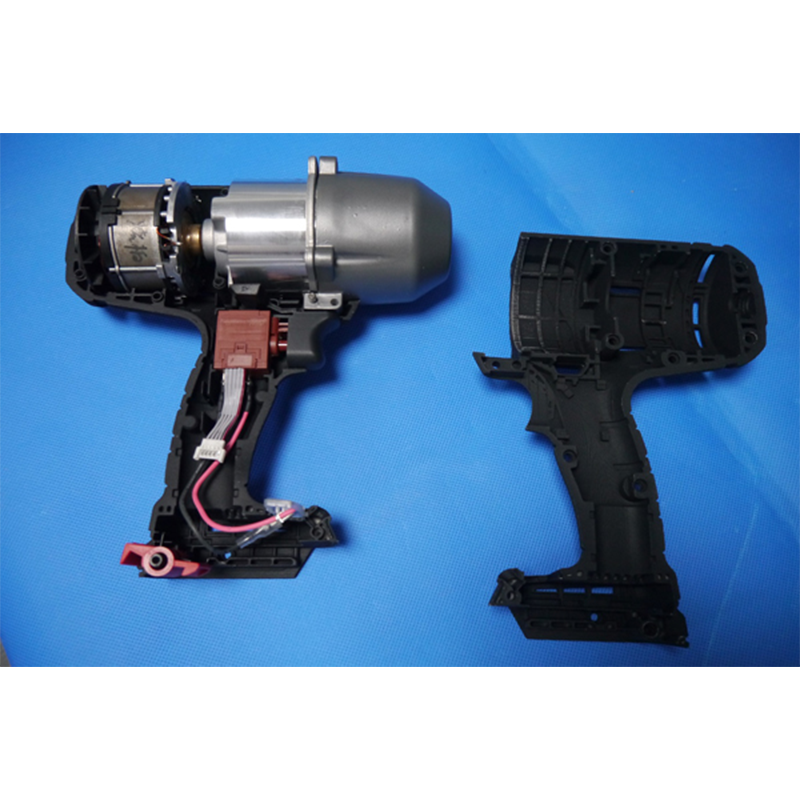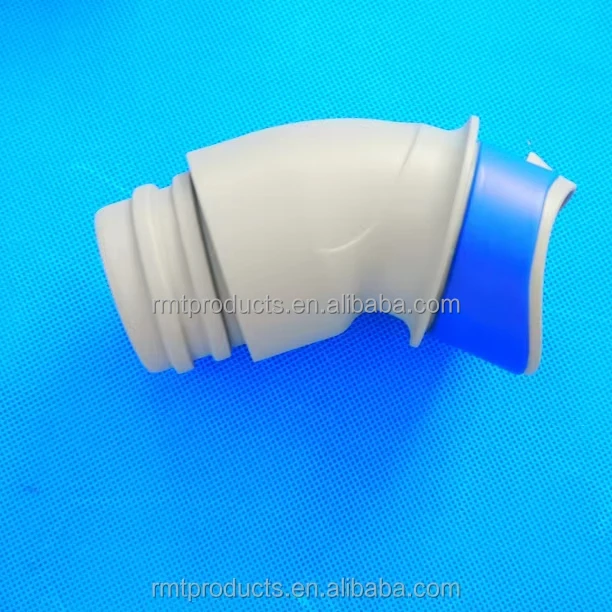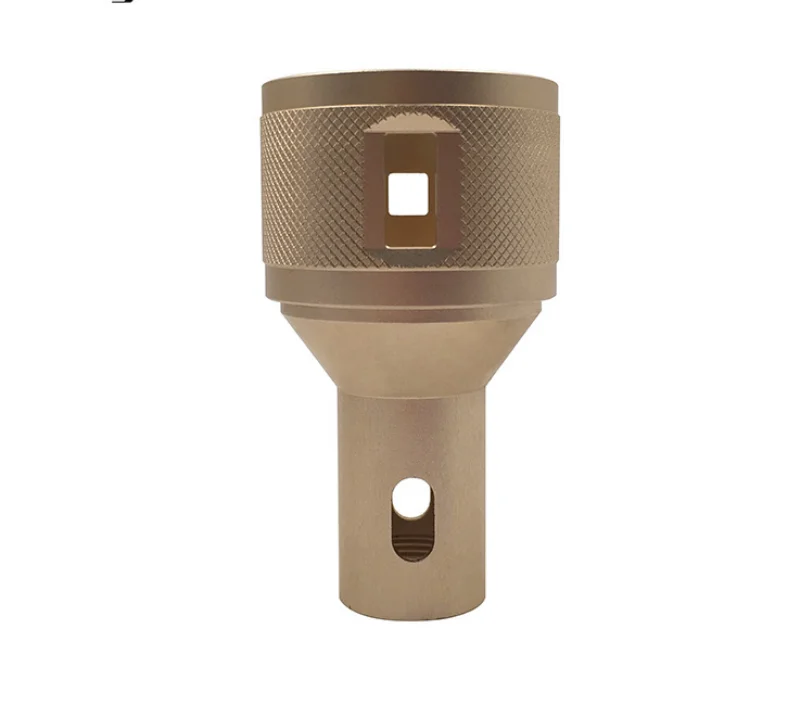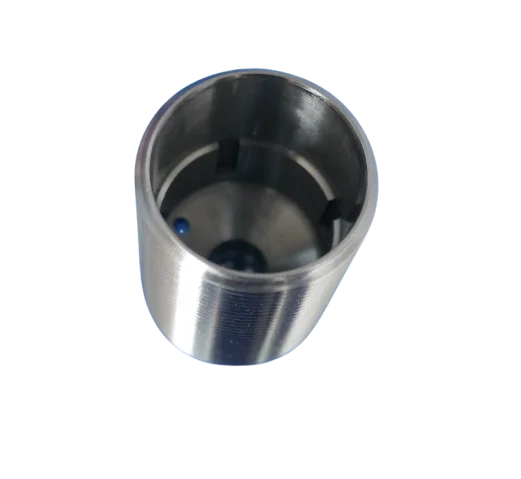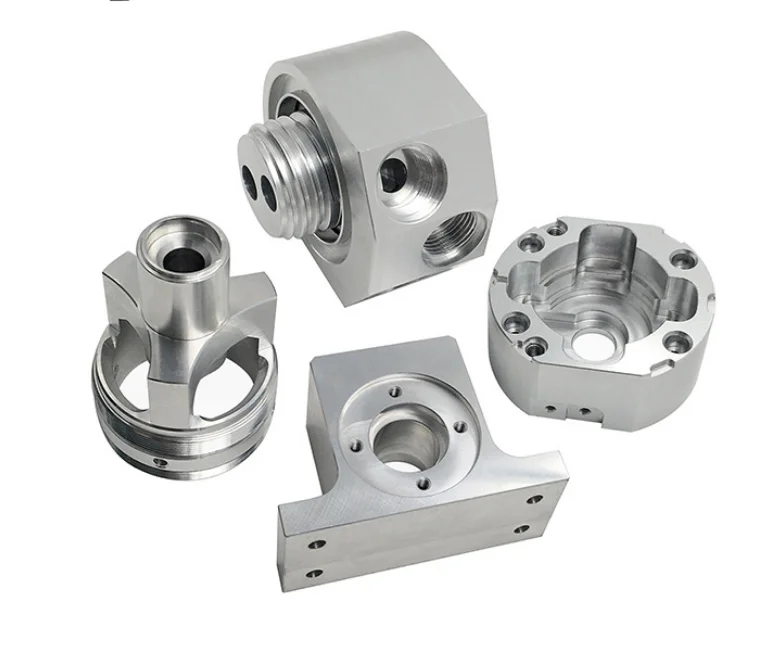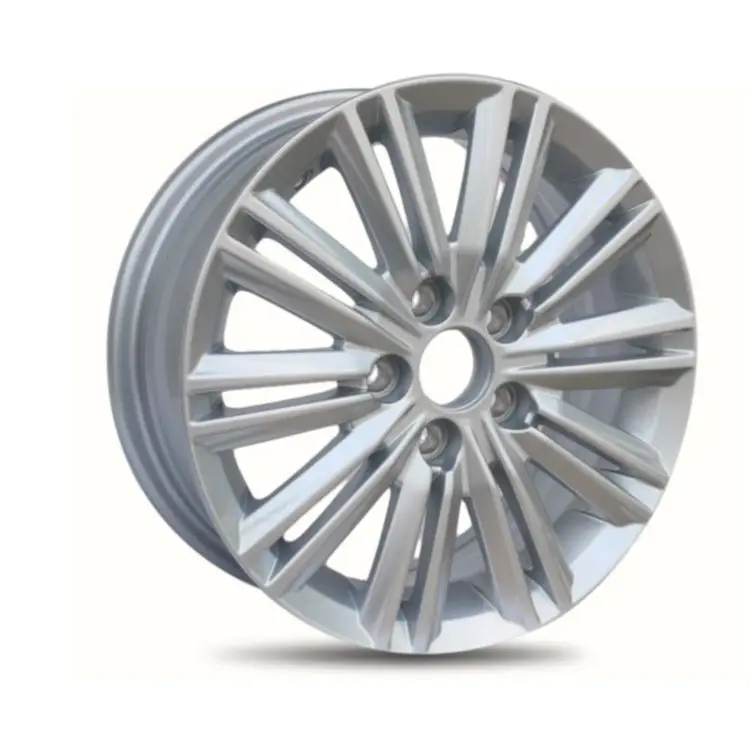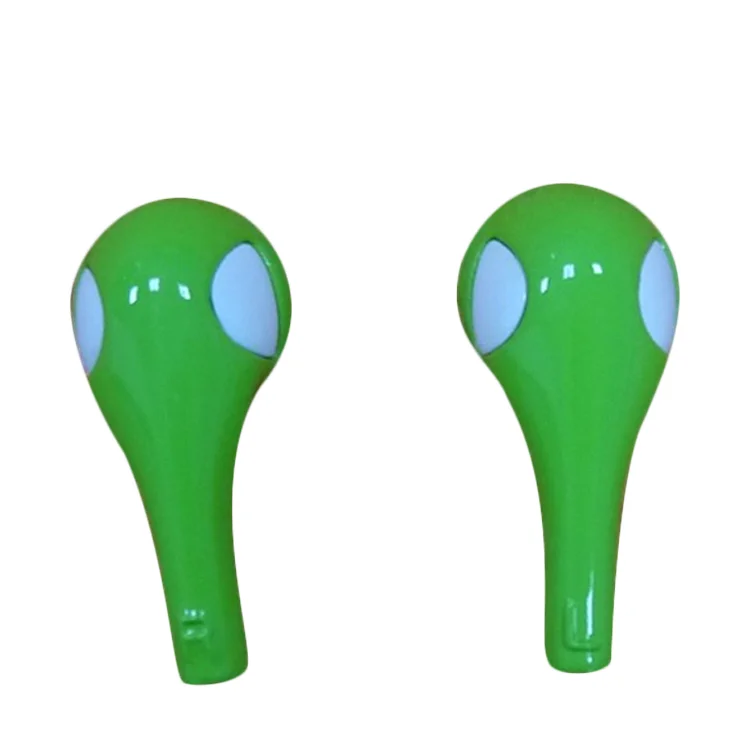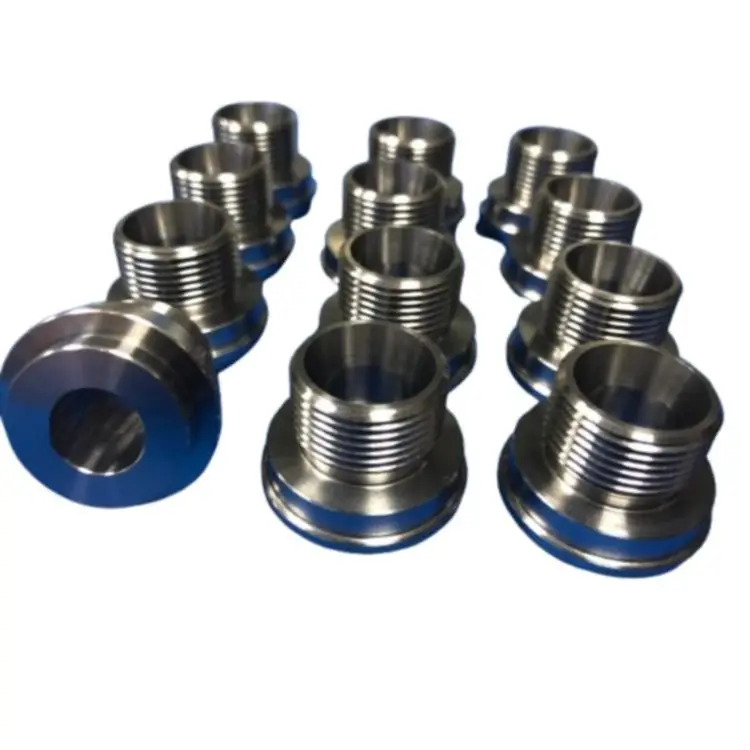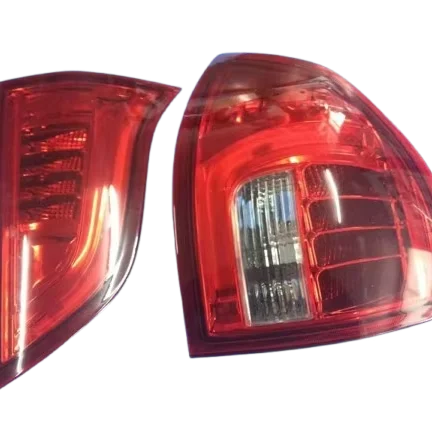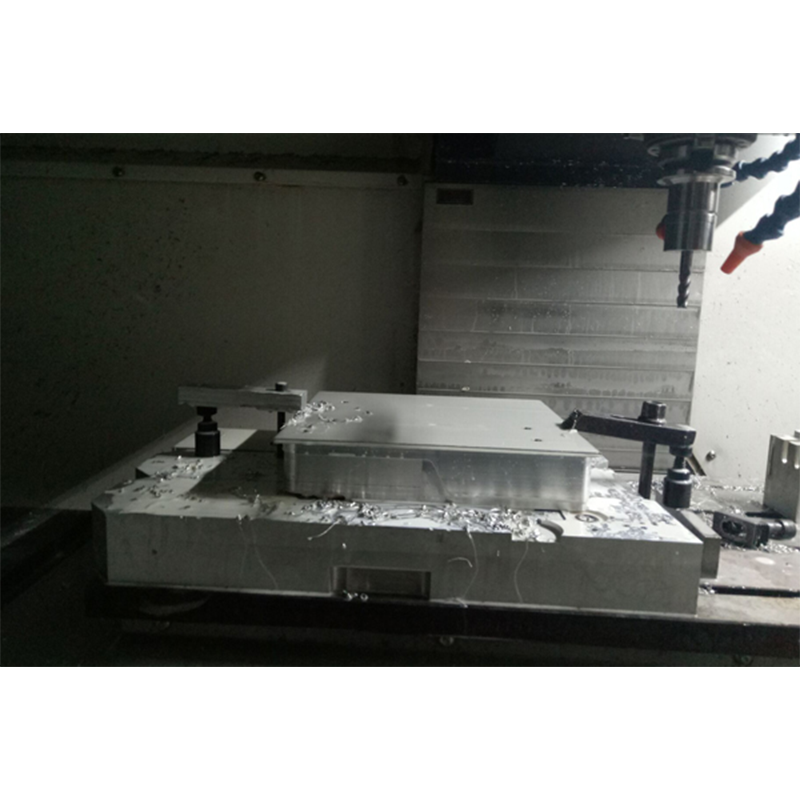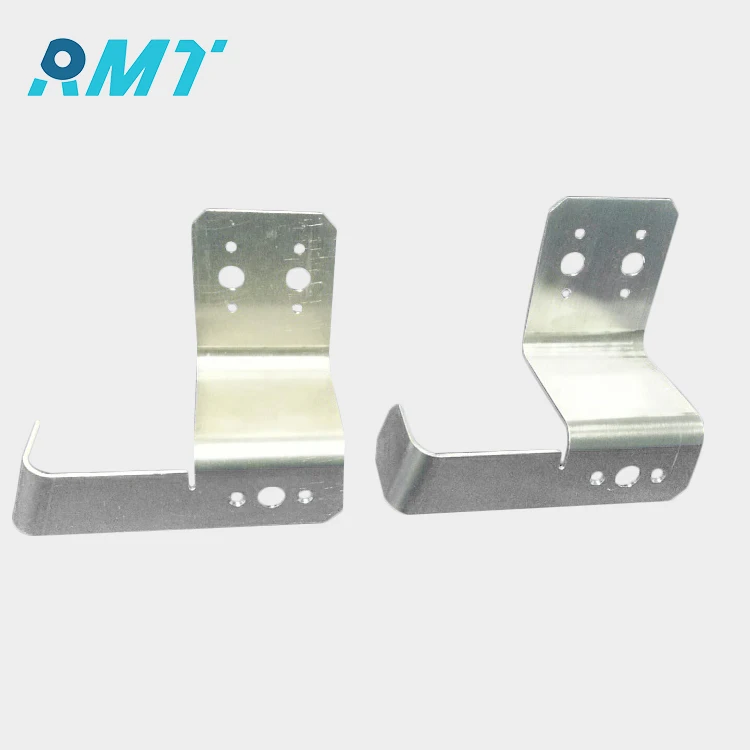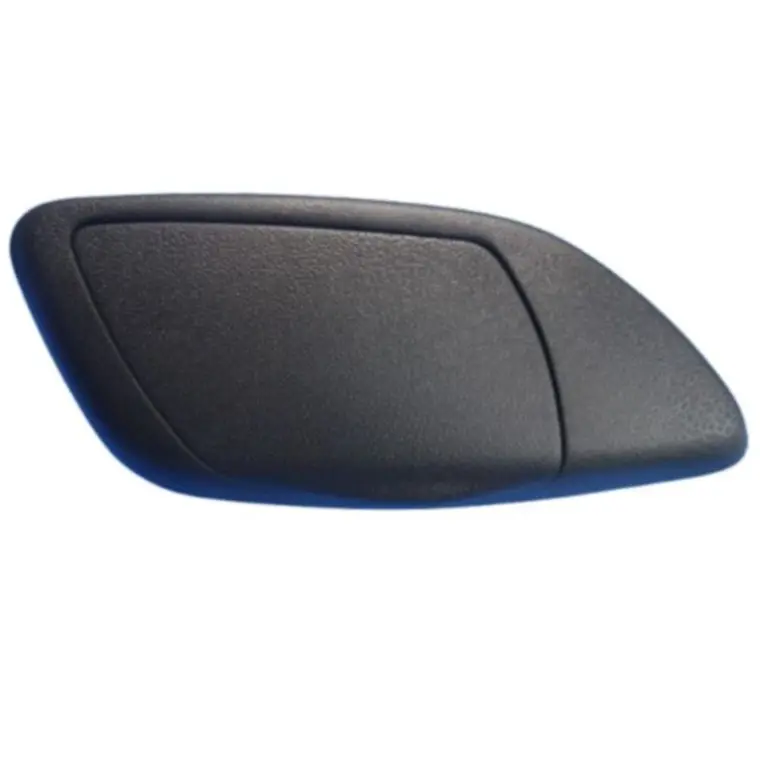การสร้างต้นแบบอย่างรวดเร็ว: เร่งวิ่งวงจรการพัฒนาสินค้า
การเข้าใจเทคนิคการสร้างต้นแบบอย่างรวดเร็วสำหรับการพัฒนาผลิตภัณฑ์
การสร้างต้นแบบอย่างรวดเร็วเป็นวิธีที่สำคัญในกระบวนการพัฒนาผลิตภัณฑ์ โดยช่วยให้สามารถสร้างเวอร์ชันแรกของผลิตภัณฑ์เพื่อทดสอบแนวคิดและฟังก์ชันต่างๆ วิธีนี้มีบทบาทสำคัญในการลดเวลาและต้นทุนที่เกี่ยวข้องกับการพัฒนาผลิตภัณฑ์ โดยการสนับสนุนการวนซ้ำอย่างรวดเร็วและการให้คำแนะนำทันที การสร้างต้นแบบอย่างรวดเร็วสามารถลดเวลาในการพัฒนาลงได้ถึง 30% ตามที่ระบุไว้ในหลาย ๆ การศึกษา ต้นแบบเหล่านี้ช่วยระบุข้อบกพร่องด้านการออกแบบล่วงหน้า ทำให้สามารถปรับเปลี่ยนก่อนที่จะไปสู่การผลิตเต็มรูปแบบ ลดความเสี่ยงจากข้อผิดพลาดที่มีต้นทุนสูงอย่างมาก
มีเทคนิคหลายอย่างที่ใช้ในการสร้างต้นแบบอย่างรวดเร็ว แต่ละเทคนิคมีข้อดีที่แตกต่างกันขึ้นอยู่กับความต้องการเฉพาะของโครงการ การพิมพ์ 3 มิติ ถูกใช้อย่างแพร่หลายเนื่องจากความสามารถในการสร้างรูปร่างที่ซับซ้อนได้อย่างมีประสิทธิภาพ ทำให้เหมาะสำหรับการตรวจสอบการออกแบบและการทดสอบฟังก์ชัน การวิธีนี้เป็นประโยชน์อย่างยิ่งสำหรับโครงการที่ต้องการรายละเอียดที่ซับซ้อนและวงจรการผลิตที่รวดเร็ว การเจียร CNC ในทางกลับกัน มอบความแม่นยำสูงและเหมาะสมสำหรับตัวอย่างจำลองที่ต้องการชิ้นส่วนโลหะ มักถูกใช้ในแอปพลิเคชันเช่นการผลิตแผ่นโลหะ การฉีดขึ้นรูป เหมาะสำหรับโครงการที่ต้องการตัวอย่างจำลองที่มีคุณสมบัติเหมือนกับผลิตภัณฑ์ขั้นสุดท้าย มอบโซลูชันที่แข็งแรงสำหรับความต้องการจำนวนมาก การเลือกวิธีที่เหมาะสมขึ้นอยู่กับขอบเขตและความต้องการของโครงการ เพื่อให้มั่นใจว่าแต่ละวิธีสอดคล้องกับผลลัพธ์ที่ตั้งไว้
ประโยชน์ของการสร้างต้นแบบอย่างรวดเร็วในวัฏจักรการพัฒนาผลิตภัณฑ์
การสร้างต้นแบบอย่างรวดเร็วช่วยเพิ่มประสิทธิภาพในการพัฒนาผลิตภัณฑ์โดยการสนับสนุนการวนซ้ำที่เร็วขึ้น ทำให้นักออกแบบสามารถทดสอบและปรับปรุงแนวคิดของพวกเขาได้อย่างรวดเร็ว แนวทางนี้สนับสนุนสภาพแวดล้อมการพัฒนาแบบคล่องตัวซึ่งแนวคิดสามารถถูกปรับปรุงอย่างรวดเร็วตามคำแนะนำในเวลาจริง การวนซ้ำอย่างรวดเร็วนี้ไม่เพียงแต่ลดระยะเวลาจากแนวคิดไปสู่การผลิตเท่านั้น แต่ยังช่วยให้ทีมงานสามารถสำรวจวิธีแก้ปัญหาเชิงสร้างสรรค์โดยไม่มีความล่าช้าที่ยุ่งยาก เช่น โดยการสร้างและประเมินต้นแบบที่แตกต่างกันอย่างรวดเร็ว ทีมงานสามารถเน้นการออกแบบที่เป็นศูนย์กลางผู้ใช้ เพื่อเพิ่มทั้งฟังก์ชันการทำงานและความพึงพอใจของผู้ใช้
อีกหนึ่งข้อได้เปรียบที่สำคัญของการสร้างต้นแบบอย่างรวดเร็วคือการลดต้นทุนในการพัฒนา ด้วยการใช้วิธีนี้ โครงการมักจะมีการลดต้นทุนลงได้ถึง 50% การประหยัดต้นทุนนี้เกิดจากการตรวจพบและแก้ไขข้อบกพร่องในดีไซน์ตั้งแต่ช่วงต้นของกระบวนการพัฒนา ซึ่งป้องกันไม่ให้มีการแก้ไขที่แพงในช่วงหลัง โดยการจับผิดพลาดที่อาจเกิดขึ้นก่อนที่จะเข้าสู่การผลิตเต็มรูปแบบ บริษัทสามารถจัดสรรทรัพยากรได้อย่างมีประสิทธิภาพมากขึ้น โดยเน้นไปที่การเพิ่มฟีเจอร์ของผลิตภัณฑ์แทนที่จะแก้ไขปัญหาที่สามารถป้องกันได้
สุดท้ายนี้ การสร้างต้นแบบอย่างรวดเร็วช่วยส่งเสริมการสื่อสารและการร่วมมือที่ดีขึ้นระหว่างทีมงาน โดยการให้ต้นแบบที่จับต้องได้ โมเดลเหล่านี้ทำหน้าที่เป็นเครื่องมือสื่อสารที่มีประสิทธิภาพซึ่งช่วยให้แผนกต่าง ๆ เช่น การออกแบบ การวิศวกรรม และการตลาด สามารถปรับให้สอดคล้องกับวิสัยทัศน์ของผลิตภัณฑ์ได้ง่ายขึ้น ต้นแบบที่จับต้องได้ยังช่วยเพิ่มความเข้าร่วมของผู้มีส่วนได้ส่วนเสีย กระตุ้นคำแนะนำเชิงสร้างสรรค์ และการตัดสินใจที่มีข้อมูล นำไปสู่ผลิตภัณฑ์ที่ตอบสนองความต้องการของตลาดและผู้บริโภคได้ดีขึ้น
ประเภทหลักของการสร้างต้นแบบอย่างรวดเร็ว
การเข้าใจประเภทหลักของเทคนิคการสร้างต้นแบบอย่างรวดเร็วเป็นสิ่งสำคัญสำหรับการเพิ่มประสิทธิภาพในการพัฒนาผลิตภัณฑ์ หนึ่งในวิธีที่ใช้กันมากที่สุดคือ Stereolithography (SLA) , เทคโนโลยีที่ใช้เลเซอร์อัลตราไวโอเลตในการทำให้เรซินโฟโตโพลิเมอร์เหลวแข็งตัวเป็นชิ้นส่วนของแข็ง กระบวนการนี้เหมาะสำหรับการสร้างต้นแบบความละเอียดสูงที่มีผิวเรียบและรายละเอียดคมชัด ทำให้สามารถทาสีหรือเคลือบผิวด้วยวิธีอื่นได้ง่าย SLA มีความแม่นยำและราคาไม่แพงจนเกินไป จึงเป็นทางเลือกที่ได้รับความนิยม แต่ไม่สามารถผลิตแบบจำลองที่แข็งแรงที่สุดได้ เพราะอาจเสื่อมสภาพเมื่อถูกแสง UV และความชื้น
อีกวิธีที่พบบ่อยคือ การพิมพ์แบบ Fused Deposition Modeling (FDM) , ซึ่งเป็นที่รู้จักในเรื่องความสะดวกและถูกใช้อย่างแพร่หลายโดยผู้ผลิตในหลากหลายขนาด FDM ใช้เส้นใยเทอร์โมพลาสติกที่ถูกหลอมละลายทีละชั้นเพื่อสร้างแบบจำลอง ความเรียบง่ายและความคุ้มค่าทำให้วิธีนี้เป็นที่นิยม โดยเฉพาะในสถานศึกษาและกลุ่มงานอดิเรก แม้ว่าแบบจำลองจาก FDM จะไม่ขึ้นชื่อเรื่องความทนทาน แต่ก็เพียงพอสำหรับความต้องการในการสร้างต้นแบบหลายประเภท โดยเฉพาะเมื่อความแม่นยำระดับละเอียดไม่ใช่สิ่งสำคัญ
Selective Laser Sintering (SLS) เป็นอีกวิธีการสร้างต้นแบบอย่างรวดเร็วขั้นสูง โดยใช้เลเซอร์ CO2 เพื่อหลอมผงวัสดุให้กลายเป็นโครงสร้างที่แข็ง วิธีนี้เหมาะสำหรับการสร้างต้นแบบที่สามารถใช้งานได้จริงด้วยรูปทรงที่ซับซ้อน เนื่องจากความสามารถในการผลิตชิ้นส่วนที่ทนทานและมีคุณสมบัติเท่าเทียมกันในทุกทิศทาง แม้ว่า SLS จะมีข้อจำกัดในเรื่องความเรียบของผิวและการเข้าถึงวัสดุ แต่ยังคงเป็นตัวเลือกสำคัญสำหรับโครงการที่ต้องการต้นแบบที่แข็งแรงและละเอียด
เทคนิคการสร้างต้นแบบอย่างรวดเร็วหลากหลายแบบนี้ตอบสนองต่อระดับรายละเอียด ความทนทาน และต้นทุนที่แตกต่างกัน ทำให้พวกมันเป็นเครื่องมือที่ขาดไม่ได้ในวงการพัฒนาผลิตภัณฑ์และการผลิตชิ้นส่วนยานยนต์ที่เต็มไปด้วยการเปลี่ยนแปลง
การประยุกต์ใช้การสร้างต้นแบบอย่างรวดเร็วในอุตสาหกรรมต่างๆ
การสร้างต้นแบบอย่างรวดเร็วกำลังเปลี่ยนแปลงวงการผลิตชิ้นส่วนรถยนต์โดยการทำให้กระบวนการออกแบบมีประสิทธิภาพมากขึ้น โดยการอนุญาตให้วิศวกรสามารถปรับปรุงและพัฒนาการออกแบบได้อย่างรวดเร็ว การสร้างต้นแบบอย่างรวดเร็วช่วยเร่งการนวัตกรรม ทำให้ผู้ผลิตสามารถผลิตชิ้นส่วนที่มีน้ำหนักเบาและมีประสิทธิภาพได้ เทคโนโลยีนี้มีความสำคัญในการสร้างต้นแบบที่สามารถทดสอบในสภาพจริง รับรองว่าการออกแบบสามารถทนต่อความต้องการที่เข้มงวดของอุตสาหกรรมรถยนต์ ด้วยเหตุนี้ บริษัทรถยนต์จึงสามารถก้าวจากแนวคิดไปสู่การผลิตได้อย่างรวดเร็ว ลดเวลาในการออกสู่ตลาดและเพิ่มคุณภาพโดยรวมของยานพาหนะ
ในกระบวนการพัฒนาผลิตภัณฑ์สำหรับผู้บริโภค การสร้างต้นแบบอย่างรวดเร็วช่วยให้บริษัทสามารถเข้าสู่ตลาดได้เร็วขึ้นและปรับตัวตามความต้องการของผู้บริโภคที่เปลี่ยนแปลงตลอดเวลาได้อย่างง่ายดาย โดยการสร้างและทดสอบต้นแบบอย่างรวดเร็ว ผู้ผลิตสามารถรวบรวมความคิดเห็นจากผู้ใช้ในระยะแรกและทำการแก้ไขที่จำเป็นได้อย่างทันท่วงที วิธีนี้ไม่เพียงแต่ทำให้วงจรการพัฒนาสั้นลง แต่ยังลดความเสี่ยงที่เกี่ยวข้องกับการเปิดตัวผลิตภัณฑ์ใหม่อีกด้วย ดังนั้น ธุรกิจสามารถตอบสนองต่อแนวโน้มของผู้บริโภคได้อย่างคล่องตัว ซึ่งช่วยให้พวกเขายังคงมีความแข่งขันในตลาดที่เปลี่ยนแปลงอย่างรวดเร็วในปัจจุบัน
อุตสาหกรรมด้านสุขภาพพึ่งพาการสร้างต้นแบบอย่างรวดเร็วเป็นอย่างมากสำหรับการพัฒนาอุปกรณ์ทางการแพทย์และเครื่องมือศัลยกรรมที่ปรับแต่งได้ เทคโนโลยีนี้ช่วยให้สามารถสร้างโซลูชันเฉพาะสำหรับผู้ป่วยได้ ซึ่งเพิ่มประสิทธิภาพของการรักษา กรณีศึกษาที่น่าสนใจในภาคส่วนนี้คือการพัฒนาแขนเท้าเทียมที่พิมพ์ด้วยเทคโนโลยี 3D ซึ่งทำให้อุปกรณ์เหล่านี้เข้าถึงได้ง่ายขึ้นและราคาไม่แพง การสร้างต้นแบบอย่างรวดเร็วยังช่วยส่งเสริมการผลิตแบบจำลองสำหรับการผ่าตัด มอบเครื่องมือที่มีคุณค่าแก่ศัลยแพทย์ในการวางแผนก่อนการผ่าตัด ความยืดหยุ่นนี้แสดงให้เห็นถึงบทบาทสำคัญของการสร้างต้นแบบอย่างรวดเร็วในการปรับปรุงผลลัพธ์ของผู้ป่วยและการพัฒนาเทคโนโลยีทางการแพทย์
ผลิตภัณฑ์จริงที่ใช้ประโยชน์จากการสร้างต้นแบบอย่างรวดเร็ว
การผลิตตัวอย่างโมเดลแบบพิมพ์ 3D SLA จำนวน 100 ชุด แสดงให้เห็นถึงประสิทธิภาพและความเป็นเลิศในมาตรฐานที่ได้รับจากการผลิตแบบเพิ่มเติม โดยใช้เทคโนโลยี Stereolithography (SLA) กระบวนการนี้เกี่ยวข้องกับการเซ็ตเรซินด้วยเลเซอร์ UV ซึ่งช่วยให้สามารถสร้างโมเดลที่มีรายละเอียดและแม่นยำได้ โมเดลดังกล่าวมีความสำคัญสำหรับงานต่าง ๆ ตั้งแต่การมองเห็นแนวคิดไปจนถึงการสร้างต้นแบบเชิงฟังก์ชัน โดยมอบเวลาตอบสนองที่รวดเร็วและการตกแต่งผิวที่ยอดเยี่ยม ความสามารถในการทำงานละเอียดสูงนี้เหมาะสำหรับอุตสาหกรรม เช่น อุตสาหกรรมยานยนต์และอวกาศ ที่ความแม่นยำเป็นสิ่งสำคัญ
การหล่อแบบสุญญากาศเป็นเทคนิคที่สำคัญอีกวิธีหนึ่งในด้านการสร้างตัวอย่างผลิตภัณฑ์อย่างรวดเร็ว โดยเฉพาะสำหรับการสร้างต้นแบบผลิตภัณฑ์พลาสติก วิธีนี้ช่วยให้สามารถผลิตต้นแบบที่มีรายละเอียดและแม่นยำได้อย่างเป็นระบบโดยการเทยูรีเทนลงในแม่พิมพ์ภายใต้สภาพสุญญากาศ ผลลัพธ์ที่ได้คือต้นแบบที่เหมือนกับต้นฉบับอย่างสมบูรณ์ ทำให้การหล่อแบบสุญญากาศเหมาะสมสำหรับการทดสอบหรือการผลิตขนาดเล็กของดีไซน์ที่ซับซ้อน นอกจากนี้วิธีนี้ยังช่วยให้ผู้ผลิตสามารถตอบสนองความต้องการสูงได้อย่างมีประสิทธิภาพ และยังคงรักษามาตรฐานคุณภาพที่เข้มงวดตามที่อุตสาหกรรมต่างๆ ต้องการ
โดยการผสานรวมวิธีการสร้างตัวอย่างจำลองขั้นสูงเหล่านี้ เจ้าของกิจการสามารถพัฒนานวัตกรรมได้อย่างรวดเร็ว พร้อมยึดมั่นในมาตรฐานความแม่นยำและประสิทธิภาพที่สูงซึ่งจำเป็นในตลาดที่มีการแข่งขันสูงในปัจจุบัน
แนวโน้มในอนาคตของเทคโนโลยีการสร้างตัวอย่างจำลองอย่างรวดเร็ว
ในอนาคต การสร้างตัวอย่างจำลองอย่างรวดเร็วกำลังถูกปฏิวัติโดยความก้าวหน้าในด้านวัสดุ โดยเฉพาะการแนะนำวัสดุที่มาจากชีวภาพและตัวเลือกหลายวัสดุ นวัตกรรมเหล่านี้กำลังขยายขอบเขตของการสร้างตัวอย่างจำลองโดยการสนับสนุนการออกแบบที่ซับซ้อนและยั่งยืนมากขึ้นเพื่อตอบสนองความต้องการหลากหลายของอุตสาหกรรม วัสดุที่มาจากชีวภาพได้รับความนิยมเพิ่มขึ้นเนื่องจากประโยชน์ทางสิ่งแวดล้อม โดยเสนอทางเลือกที่ตอบโจทย์ทั้งด้านนิเวศวิทยาและการใช้งาน นอกจากนี้ การสร้างตัวอย่างจำลองแบบหลายวัสดุยังช่วยให้สามารถสร้างตัวอย่างที่สามารถเลียนแบบสมรรถนะและความเป็นมาของผลิตภัณฑ์ปลายทางได้อย่างแม่นยำยิ่งขึ้น โดยการรวมคุณสมบัติที่แตกต่างกันไว้ในโมเดลเดียวเพื่อเพิ่มประสิทธิภาพในการทดสอบและการปรับปรุง
นอกจากนี้ การผสานรวมของปัญญาประดิษฐ์และระบบอัตโนมัติในกระบวนการสร้างต้นแบบอย่างรวดเร็วกำลังเปิดทางให้กับอนาคตที่เปลี่ยนแปลงอย่างมาก เทคโนโลยีเหล่านี้สัญญาว่าจะทำให้กระบวนการสร้างต้นแบบราบรื่นขึ้น โดยเครื่องจักรสามารถเรียนรู้จากข้อมูลการออกแบบเพื่อเพิ่มประสิทธิภาพและความแม่นยำของผลลัพธ์ ระบบขับเคลื่อนด้วยปัญญาประดิษฐ์สามารถคาดการณ์ข้อบกพร่องในการออกแบบและเสนอแนะการปรับปรุงได้ในเวลาจริง ซึ่งช่วยลดเวลาและทรัพยากรที่ใช้ไปกับการวนซ้ำหลายครั้ง อัตโนมัติช่วยเร่งกระบวนการทำงานของการผลิตโดยการจัดการงานที่ซ้ำซาก ทำให้ทรัพยากรมนุษย์สามารถเน้นไปที่การสร้างนวัตกรรมและการตัดสินใจในระดับสูง เช่น การผลิตชิ้นส่วนยานยนต์และการผลิตแผ่นโลหะที่แม่นยำ ความก้าวหน้าเหล่านี้ไม่เพียงแต่เพิ่มความเร็วในการพัฒนาผลิตภัณฑ์ แต่ยังขยายโอกาสของบริการสร้างต้นแบบอย่างรวดเร็วในหลากหลายภาคส่วน จากสุขภาพไปจนถึงอิเล็กทรอนิกส์สำหรับผู้บริโภค
ความท้าทายและปัจจัยที่ควรพิจารณาในกระบวนการสร้างต้นแบบอย่างรวดเร็ว
ในวงการของการสร้างต้นแบบอย่างรวดเร็ว การปรับสมดุลระหว่างความเร็วและคุณภาพถือเป็นความท้าทายสำคัญ แม้วิธีการสร้างต้นแบบอย่างรวดเร็วจะได้รับการยอมรับในเรื่องเวลาการผลิตที่เร่งด่วน แต่ก็อาจส่งผลให้รายละเอียดและความเรียบร้อยของต้นแบบลดลงตามไปด้วย ตามคำแนะนำจากผู้เชี่ยวชาญ การรักษาความเที่ยงตรงสูงขณะที่ยังคงมีเวลาตอบสนองที่รวดเร็วนั้นต้องอาศัยเทคโนโลยีขั้นสูงและการวางแผนอย่างรอบคอบ เป็นสิ่งสำคัญสำหรับทีมงานที่จะเลือกวิธีการสร้างต้นแบบที่สามารถมอบทั้งความเร็วและความแม่นยำได้
อีกปัจจัยหนึ่งที่ต้องพิจารณาคือข้อจำกัดของวัสดุและผลกระทบด้านต้นทุนในกระบวนการสร้างตัวอย่างจำลองอย่างรวดเร็ว การเลือกวัสดุมีความสำคัญอย่างยิ่ง เนื่องจากส่งผลโดยตรงต่อประสิทธิภาพ ความเป็นไปได้ และต้นทุนของตัวอย่างจำลอง เช่น ในขณะที่บางเทคโนโลยีสำหรับการสร้างตัวอย่างจำลองอย่างรวดเร็วรองรับวัสดุหลากหลายชนิด แต่บางประเภทอาจมีข้อจำกัดมากกว่า ส่งผลต่อการตัดสินใจในการออกแบบและการออกผลิตภัณฑ์สุดท้าย นอกจากนี้ ต้นทุนของวัสดุอาจเพิ่มขึ้นอย่างรวดเร็วหากไม่ได้รับการจัดการอย่างรอบคอบ ส่งผลกระทบต่อความเป็นไปได้ทางเศรษฐกิจของโครงการ การเลือกใช้วัสดุที่เหมาะสมซึ่งสามารถสมดุลระหว่างประสิทธิภาพและความคุ้มค่าเป็นสิ่งสำคัญสำหรับการสร้างตัวอย่างจำลองที่ประสบความสำเร็จ
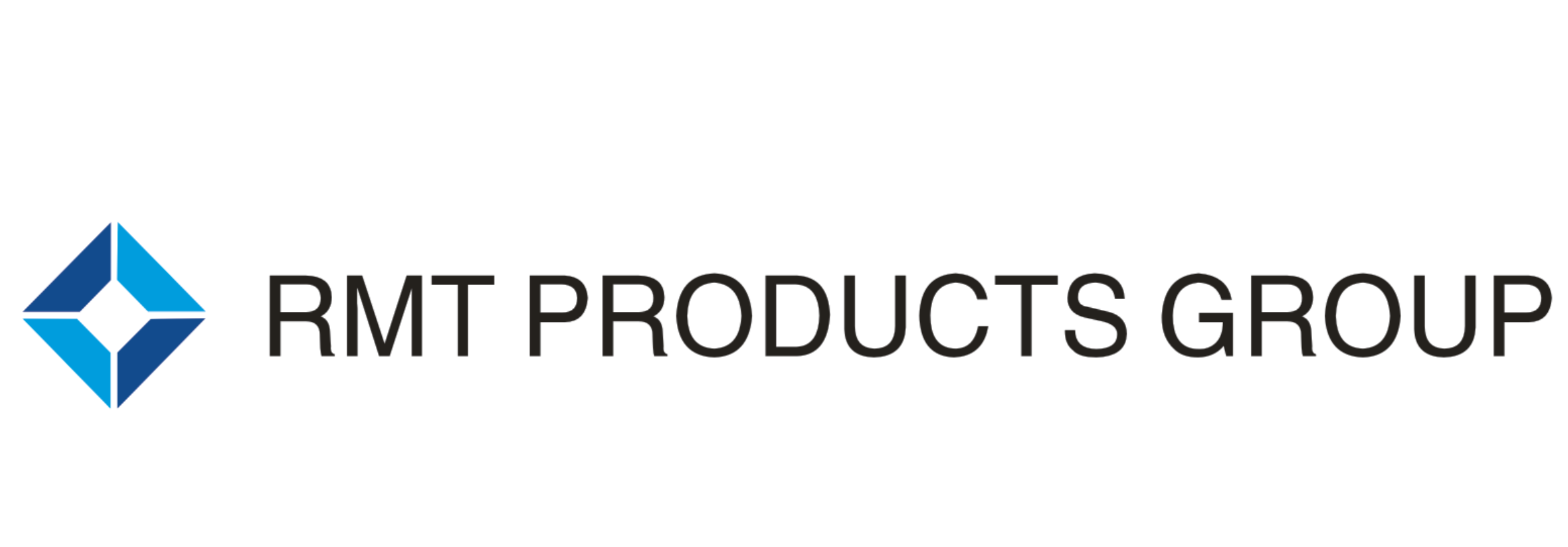
 EN
EN
 AR
AR
 BG
BG
 HR
HR
 CS
CS
 DA
DA
 NL
NL
 FI
FI
 FR
FR
 DE
DE
 EL
EL
 IT
IT
 JA
JA
 KO
KO
 NO
NO
 PL
PL
 PT
PT
 RO
RO
 RU
RU
 ES
ES
 SV
SV
 IW
IW
 LV
LV
 SR
SR
 SK
SK
 UK
UK
 GL
GL
 HU
HU
 TH
TH
 TR
TR
 FA
FA
 GA
GA
 CY
CY
 EU
EU
 BN
BN
 BS
BS
 LA
LA
 NE
NE
 SO
SO
 KK
KK
